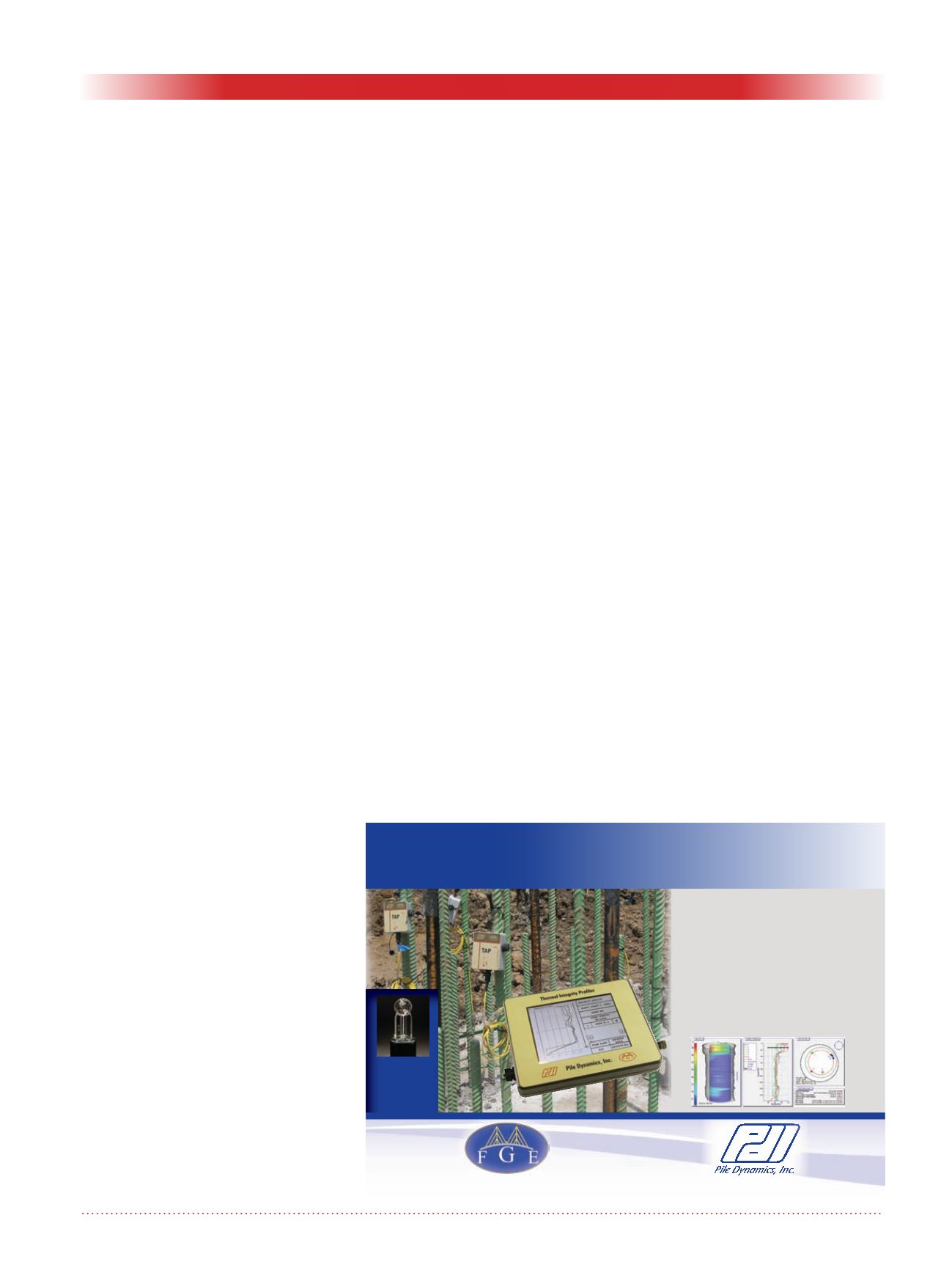
Geotechnical News • September 2015
21
GEOTECHNICAL INSTRUMENTATION NEWS
the requirements, but the ability to
fix to all sub-strata and the consistent
aesthetic quality of the epoxy mortar
dictated.
Fixing to substrata was more difficult
with cement based mortars because of
the time lag between making the mor-
tar and filling the small hole. This time
could be large due to the scattered
holes over the facades of the building
and the busy streets of Amsterdam;
that led to multiple position changes
for cherry picker access.
Furthermore, the materials have dif-
ferent permeability. Dry stone drew
moisture from a standard cement
based filling, rendering it useless. It
was necessary to either pre-wet the
stone or treat with a hydrophobic
agent.
Only in very specific instances, such
as Amsterdam Central Station, was
a mortar-based filler used. In these
instances the authenticity of filler
material prevailed above other require-
ments. At Central Station the costs for
removing a single prism and making
good tripled compared to elsewhere on
the project. This increase in cost was
mainly driven by hiring specialised
personal and ensure all batches of
mortar matched the respective facades.
Subsurface equipment
Subsurface monitoring installations
consisted of boreholes used for:
• Deep datums.
• Combined in-place inclinometer/
extensometers.
• Piezometers.
• Cable ducts and manholes.
22 deep datums, located beyond the
North/Southline zone of influence
were installed to allow rigorous level
control during the construction works.
These were of ongoing value to the
MoA and incorporated within their
existing networks. No removal was
therefore required of these items.
Other subsurface monitoring equip-
ment consisted of a number of bore-
holes (up to 80 metres deep) adjacent
to either the station boxes or tunnels. A
number of issues arose whilst remov-
ing them:
• It was not practicable to remove the
entire depth of a borehole, so with
agreement from MoA boreholes
were only removed over the top
1 metre. This depth included all
chambers, ducts, cabling and ex-
tensometer heads.
• In-place inclinometers within the
boreholes needed to be removed
before removal of the other bore-
hole elements. This proved dif-
ficult in a number of cases because
friction had built up between the
wheels of the inclinometers and
the casings. This was caused by
a number of reasons such as soil,
corrosion and borehole deteriora-
tion. Special care was taken to
try and remove the inclinometer
assemblies completely but this was
not achieved in all cases. Some
chains broke after too much force
was applied. It was found that the
main reasons were the age and
deterioration of the boreholes and
the inclinometer chains. If friction
builds up over the large lengths
of the chain, there is little chance
of removing the chain without
complete excavation. In a small
number of cases the inclinom-
eter chain broke and a number of
sensors could not be removed.
An environmental impact assess-
ment was undertaken determined
that the instruments could be left
(providing they were sealed) in
the borehole. This environmental
impact assessment was undertaken
by SG after instruction by DM. It
was determined that no hazardous
chemicals of toxic heavy metals
were present in the inclinometers
that could pollute the soil or
groundwater.
• A borehole spanning multiple soil
layers can causes leaks between
the impermeable layers. Later this
may become an issue if boreholes
deteriorate further. The conse-
quence could be unwanted flow of
water between soil layers, the in-
ability to lower the hydraulic head
when needed and possible damage
to infrastructure. To avoid these
potential problems the boreholes
were filled with activated calcium
bentonite. This was poured into the
borehole and expanded when in
contact with water. This expan-
sion process took approximately
40 minutes. Using volume checks
between boreholes and expanding
clay it was confirmed that a seal
had been achieved.


